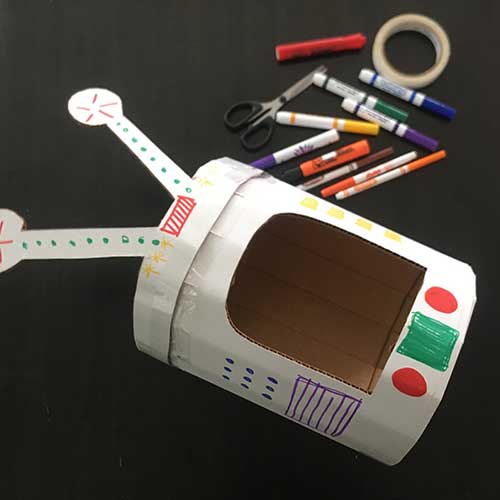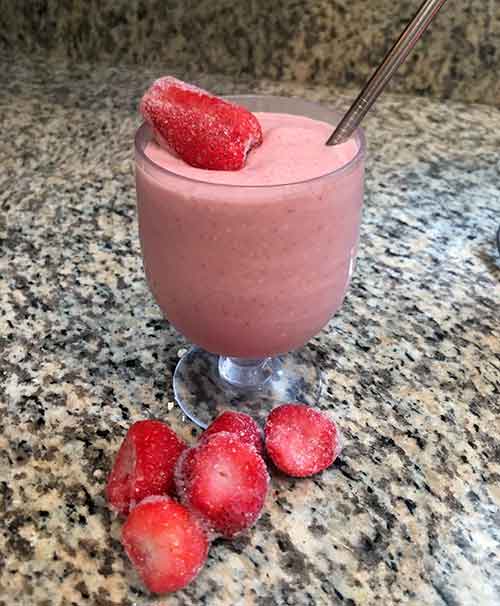
Story Time - Robo-Sauce
Activity 1: Activate Robo-Kid

The only requirements for becoming a robot are imagination and creativity. Take a look around your home and gather any household items that can be used for your robot transformation. We used a cardboard box, scissors, and tape to create a galactic robo-helmet. Need some inspiration? Here is a list of things you might have at home that could be used for your robo-helmet:
A colander, bowl or pot that fits on your head
Whisks
Wooden spoons
Cardboard boxes
Tissue boxes
Paper bags
Construction paper
Heavy duty tape to tape your creation together
Assemble your robo-helmet, activate robo-friends, and have some robo-fun. Share your creations with us at #TheHAtHome.
Activity 2: Robo-Sauce

In Adam Rubin and Daniel Salmieri’s book, Robo-Sauce, we learned the top-secret formula for Robo-Sauce was “a perfect blend of technology and magic.” After whomping on squishy humans, you might need an extra boost of Robo-Sauce to refuel. Make sure to ask a grownup, robot, or human for help if you need it.
In a blender, combine the following ingredients:
1 cup strawberries (or any type of berries you have)
1/2 a banana
1 cup oat milk (or any milk of your choosing)
1/4 cup rolled oats
Blend all together, pour into a robo-fueling vessel (a cup) and enjoy!
Activity 3: Robo-Sounds Inspired by Orbit Pavilion
Dan Goods and David Delgado are visual strategists at NASA’s Jet Propulsion Laboratory. They use their imaginations to create works of art that represent scientific concepts. Orbit Pavilion is one of their creations—it’s an immersive sound experience inside a space that looks like a silver seashell, which represents the sound of orbiting satellites around the Earth. They worked with a composer and an architect to create the sounds for Orbit Pavilion, which is currently on view at The Huntington. Visit this page to watch and listen to the Orbit Pavilion in action!